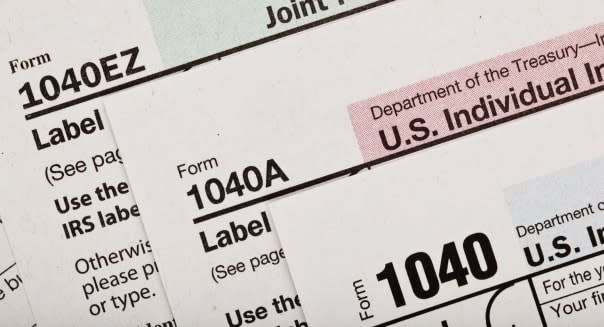1040, 1040A, 1040EZ: Which Tax Form Should You File?

Choosing which 1040 tax form you need to file your return on can be a lot harder to figure out than you'd think, but answering just a few basic questions will lead you to the right version.
The Most Important Rule: Keep It Simple
First of all, if you use tax software to prepare your return, then it will generally take the decision of which tax form to file out of your hands. Instead, the software will evaluate the answers you provide to its list of questions and then select the most appropriate form for your needs.
For those who prepare their own returns, though, the basic Internal Revenue Service rule is that the best form to file is the simplest one that addresses all of your needs. The 1040EZ is the easiest form to fill out, with the 1040A being more complicated but still less difficult than the full 1040 form.
Can You File Form 1040EZ?
Form 1040EZ is designed for the simplest returns. In order to use it, you have to meet several requirements.
First of all, Form 1040EZ is only available for filing status of single or married filing jointly, and those who have dependents to claim can't use the form. Taxpayers have to be under age 65 and ineligible for higher standard deductions for the blind.
In addition, there are income-related restrictions. You can't have more than $100,000 in taxable income, and in general, it can only come from wages, salaries, tips, unemployment compensation and taxable scholarship and fellowship grants. Some taxable interest is allowed, but only if it's less than $1,500 for the year. Alaska residents are also allowed to use 1040EZ even if they receive Permanent Fund dividends from the state.
Finally, the only credit you can claim on the 1040EZ is the Earned Income Credit, and you can't itemize deductions or make any other adjustments to income. Those who received advance payments of premium tax credits under the Affordable Care Act aren't eligible to file Form 1040EZ. Those who hire household employees like babysitters or nannies for whom they have to pay employment taxes also can't file 1040EZ, as well as those who are debtors in bankruptcy filings after Oct. 16, 2005.
What 1040A Covers
Form 1040A has some of the same restrictions as 1040EZ. Income has to be less than $100,000, and you still can't itemize deductions. But it's more flexible in other areas. For instance, heads of household, qualifying widows and widowers, and married people filing separately can use Form 1040A.
Form 1040A allows you to include more types of income. In addition to those allowed on 1040EZ, you can have ordinary dividends, capital gains distributions from mutual funds, pension and annuity income, IRA distributions, and taxable Social Security benefits and still file a 1040A. You can also claim deductions for IRA contributions, student loan interest, tuition and fee payments, and expenses that educators pay for supplies for their own classrooms.
You can also claim more credits on a 1040A. Those seeking credits for child and dependent care expenses, education expenses, and retirement savings contributions can use the form, as can those claiming credits for the elderly or disabled. Both the child tax credit and the additional child tax credit are available to 1040A filers.
Lastly, you can handle a limited number of special situations on 1040A. Those receiving dependent care benefits from work can use the form, as can those who have to pay taxes due to having past educational credits recaptured. Even some people who owe alternative minimum taxes can use Form 1040A.
The Last Resort: Form 1040
If you don't qualify for 1040EZ or 1040A treatment, then your only choice is the long Form 1040. Most notably, that includes taxpayers who want to itemize deductions.
For those who want it, the IRS has developed a tool to help you figure out which form is the simplest available for your needs. You can access it at this IRS website, and it will take information from the tax forms you've received from your employer, financial institutions, and other sources to make a recommendation.
Filing your taxes can seem complicated. But by starting with the right form, you'll be able to keep things as simple as possible and avoid biting off more than you need to chew at tax time.
Motley Fool contributorDan Caplingerhasn't been able to file a simple tax return in a long time, but he's not complaining. You can follow him on Twitter@DanCaplingeror onGoogle Plus. To read about our favorite high-yielding dividend stocks for any investor, check outour free report.


